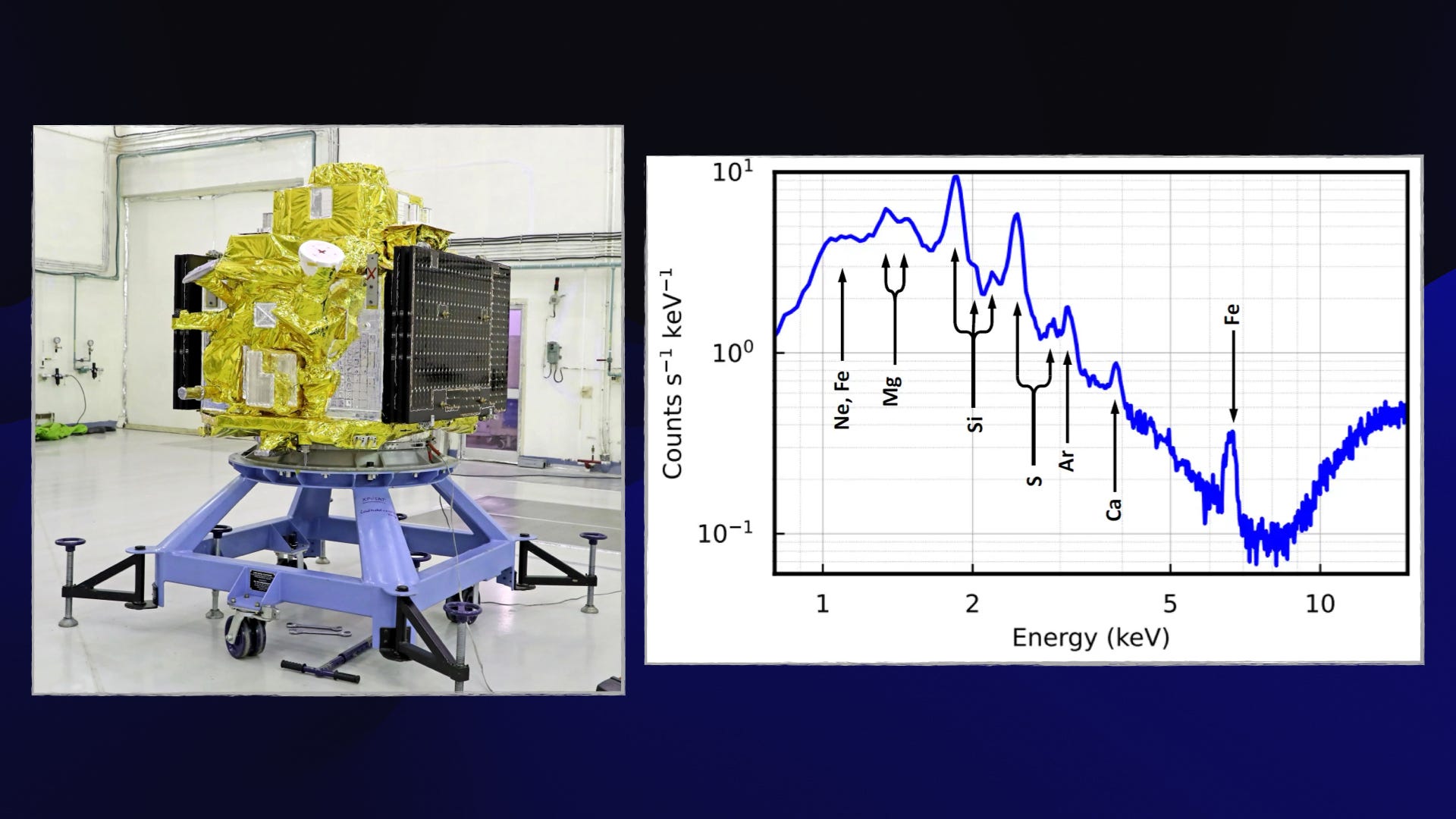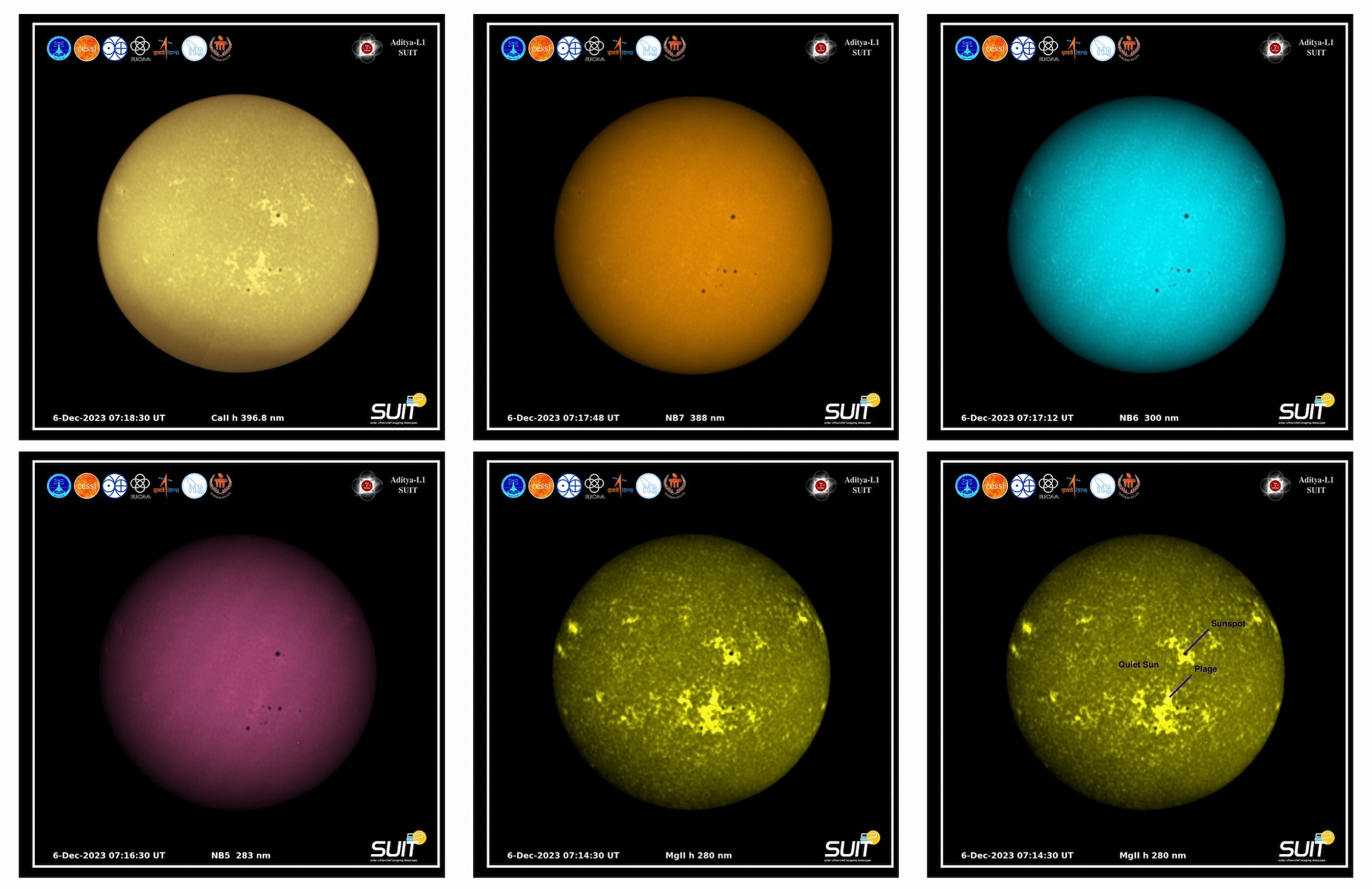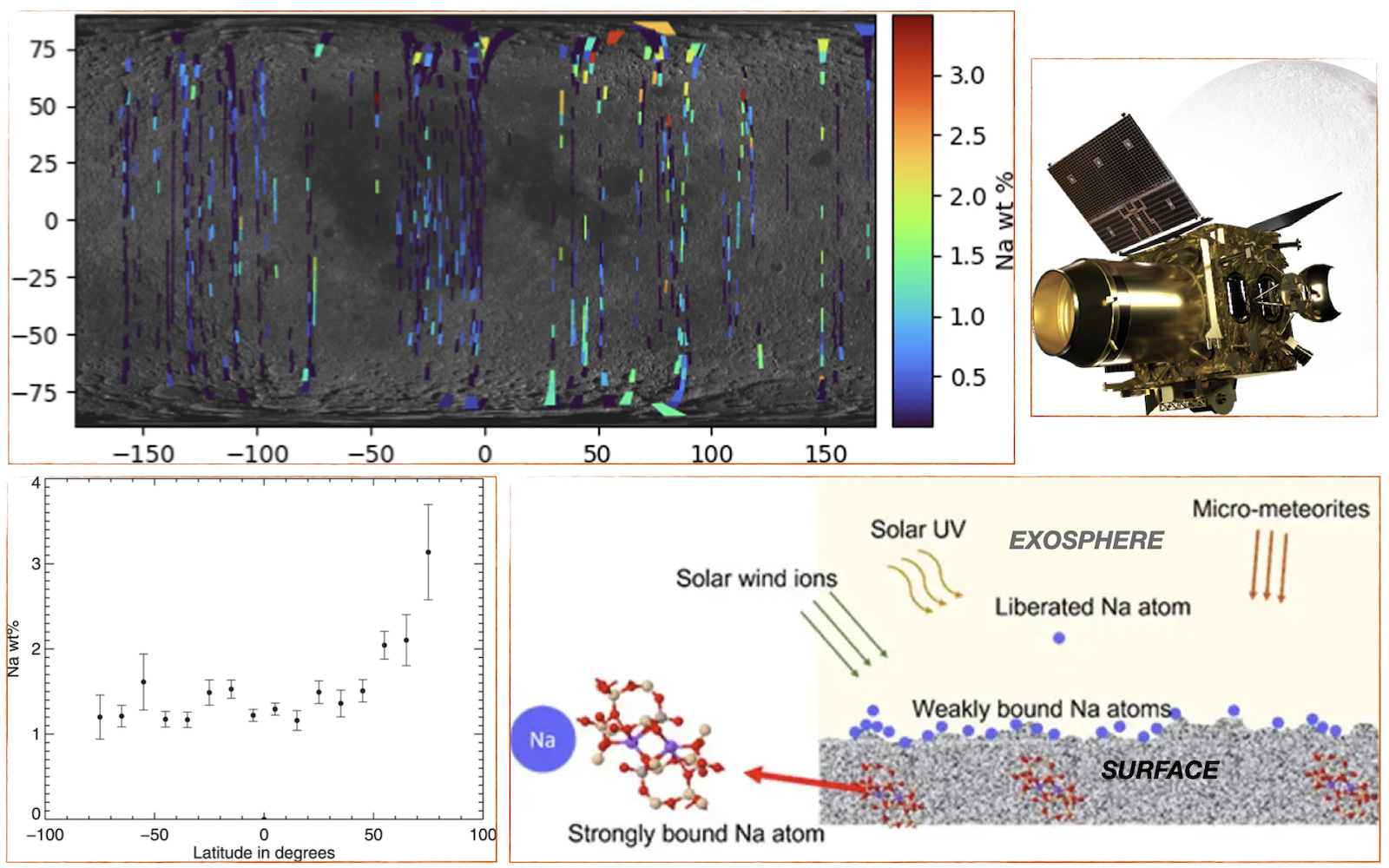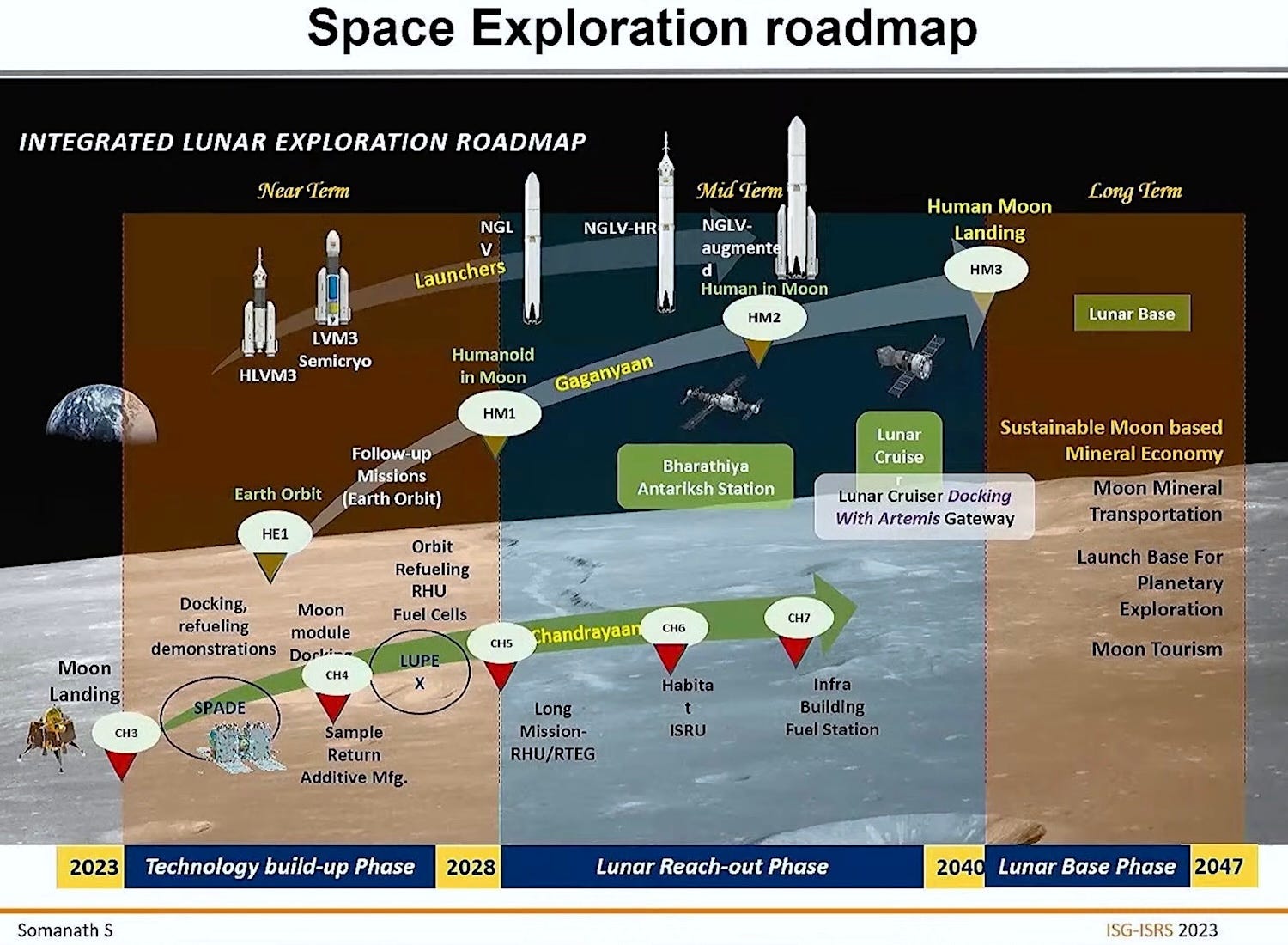Indian Space Progress #12: Doubling down on space telescopes, lunar exploration, and Earth observation
This month’s Indian Space Progress report is a science special. I hope you enjoy it!
XPoSat gazes at cosmic objects from space

On January 1, ISRO’s PSLV rocket launched India’s second space telescope called the X-ray Polarimetry Satellite, or XPoSat. While the country’s first space telescope, AstroSat, observes high energy cosmic objects in multiple wavelengths, the smaller XPoSat is more specialized and focuses on better analyzing just the X-rays emitted by cosmic objects.
XSPECT, one of the two instruments onboard XPoSat, already began observations, starting with first light from the supernova remnant Cassiopeia A. Built by the Space Astronomy Group at ISRO’s U R Rao Satellite Centre (URSC), XPSECT will conduct long-term spectral as well as time-varying measurements of cosmic objects that emit lower-energy X-rays called soft X-rays. XSPECT is expected to study X-ray emissions from black hole binaries too.
For hard X-rays, there’s XPoSat’s polarimeter called POLIX built by the Raman Research Institute. In particular, POLIX will study the polarization of X-rays emitted by cosmic objects, which will uniquely inform scientists about the physical nature of those objects—such as the strength and distribution of their magnetic fields. NASA launched the IXPE space telescope on a similar mission in December 2021. IXPE and XPoSat are the world’s only telescopes dedicated for said purpose. When scientists are able to utilize and combine data from both telescopes, we will get first or better polarization measurements for many bright X-ray sources, including pulsars, binary stars, and galactic cores.
ISRO has a good blog post on some of the physics behind XPoSat as well as on how its instruments evolved.
Aditya-L1 begins its solar staring

India’s first space-based solar observatory called Aditya-L1 launched in September 2023 to uniquely study our Sun with its advanced set of seven indigenously developed instruments. In early January, it had reached the region of the first Sun-Earth Lagrangian point (L1), where the gravitational pull of the two bodies roughly balance. On January 6, ISRO commanded Aditya-L1 to fire its thrusters and successfully enter a 178-day halo-orbit around the L1 point. This will allow Aditya-L1 to continually study the Sun for five years with minimal station keeping.
While formal science observations will begin from around April after all operational checkouts are complete, Aditya-L1 has already returned first observations of solar flares in high energy X-rays, captured unique, full-disk ultraviolet images of the Sun’s “surface” and inner atmosphere, measured charged particles from the solar wind, and deployed its patented magnetometer boom.
AstroSat has been a space science success for India, with its more than 150 cited research results in reputed international journals. If Aditya-L1 and XPoSat are able to follow suit, it would bode well for India’s still growing space science efforts.
Related tangent: SatSure (parent company of KaleidEO, a sponsor of Indian Space Progress) has a detailed blog post with real life examples on how solar weather monitoring missions like Aditya-L1 uniquely expand the life span of satellites in Earth orbit.
Chandrayaan updates as India continues exploring the Moon

- India’s Chandrayaan 2 orbiter’s CLASS instrument team released the largest and highest-resolution X-ray mapping of the Moon’s surface elements using orbital data collected over three years. Previously, CLASS provided us with the first ever global-scale sodium maps of Luna, sensed Chromium in its volcanic soil, and even detected energetic events from the Sun. Studying these datasets is unraveling specifics of how our Moon evolved and helping scientists constrain the lunar crust’s composition.
- On December 12, 2023, NASA’s Lunar Reconnaissance Orbiter (LRO) successfully laser-pinged the agency-provided small retroreflector sitting on top of ISRO’s Chandrayaan 3 lander. This first-of-a-kind demonstration is a stepping stone towards a future where Mooncraft with purpose-built lasers can locate such targets and land near them as they arrive. For example, this technique will be relevant for repeated cargo deliveries near future habitats.
- In another trick up its sleeve, ISRO pulled the Chandrayaan 3 lunar orbiter back to Earth orbit.
- In a symposium talk last November, ISRO Chief S. Somanath highlighted some key tentative missions and elements from an increasingly complex roadmap that will feed into and enable the new national goal of sending an Indian to the Moon by 2040. These include the Indo-Japanese LUPEX rover and the Chandrayaan 4 sample return missions before end of decade, a Chandrayaan 5 mission with the ability to survive the lunar night, a resource extraction and utilization demonstration with Chandrayaan 6, a crewed lunar cruiser docking with the NASA-led Gateway international orbital habitat (just as I had predicted!), a partially reusable Next Generation Launch Vehicle (NGLV), and more.

Many thanks to the Takshashila Institution, SkyServe, KaleidEO and Gurbir Singh for sponsoring this month’s Indian Space Progress report.
Some Earth observation updates from ISRO and the private sector
- Following the release of India’s much-awaited new space policy early last year, in December ISRO opened up access to 5-meter resolution remote sensing data from 44 of its satellites, making it among the highest resolution datasets of its kind in the world available to the public. Shyam Upadhyay has great coverage on its technicalities, and Vishesh Vatsal of SkyServe (a sponsor of Indian Space Progress) illustrates its potential with an example instrument from ISRO’s ResourceSat-2. Also see Bhoonidhi’s first newsletter of 2024 for more details.
- Pixxel Space, headquartered in the US but with a major Indian presence, opened up a 2800 square-meter manufacturing and testing facility in Bangalore with the hope of eventually building and qualifying up to 40 satellites a year. The announcement comes shortly after Pixxel recently closed a Google-led $36 million funding round, bringing the total money raised by the company to at least $71 million. The company is targeting launching six commercial hyperspectral Earth imaging satellites in late 2024.
- Satellogic is entering the Indian market via a partnership with Tata Advanced Systems Limited to build sub-meter resolution Earth observation satellites locally in the country for commercial as well as national defense applications.
- Ahmedabad-based PierSight Space raised $6 million to work towards its goal of building a constellation of SAR satellites aimed at providing a high 30-minute interval monitoring for the maritime industry.

More Indian space
- On the same launch as XPoSat, ISRO once again uniquely repurposed the PSLV’s fourth stage as a stabilized, solar-powered platform for onboard payloads. Called the PSLV Orbital Experimental Module or POEM, this platform affords organizations low-cost access to space for demonstrating their technologies ahead of use in future missions. On this launch, POEM hosted nine payloads from various organizations, including green thrusters from startup Bellatrix and the LEAP satellite platform demonstration from the private company Dhruva Space. POEM also successfully demoed ISRO’s own high density Lithium-ion batteries and a fuel cell with the hope of using their core technologies in future satellites and space stations.
- Hyderabad-based Skyroot raised $27.5 million, and hopes to launch their first orbital rocket Vikram-I later this year. The company previously launched suborbital test mission Prarambh in November 2022, becoming India’s first such privately developed rocket. In July, the company completed the carbon-fiber winding and curing of the rocket’s Stage-1 motor case. In June, Skyroot flight qualified its Raman-I engine, which will provide roll attitude control for Vikram-I. Also in July, the company successfully tested at an ISRO facility the first hot firing of its Raman-II engine, which will power Vikram-I’s fourth stage. In December, Skyroot passed pressure testing of Vikram-I’s first stage.
Reading menu
- Looking back at Chandrayaan 1 and forward to Artemis
- India’s Chandrayaan 2 lunar orbiter is also a Sun watcher
